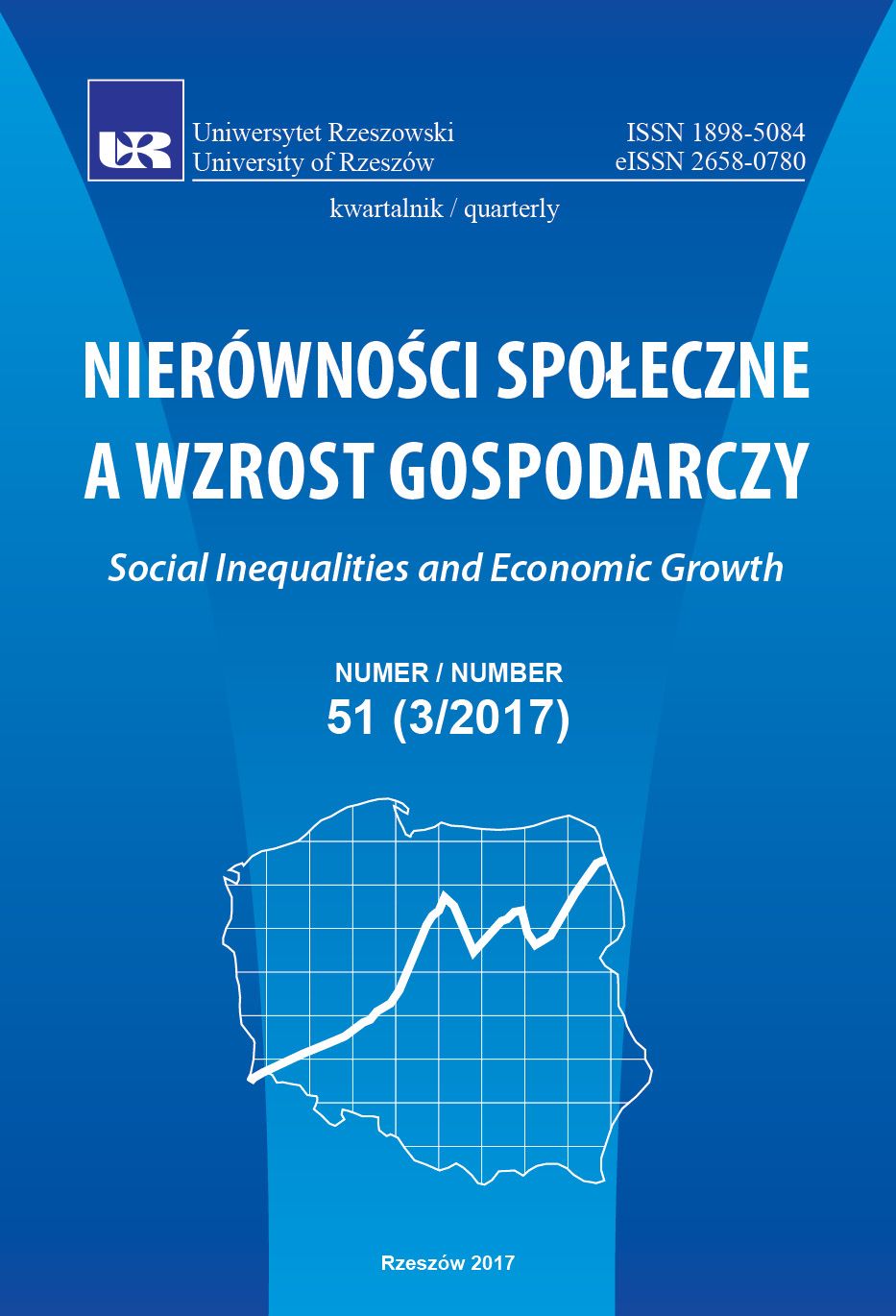Zróżnicowanie kapitału ludzkiego w Polsce w ujęciu regionalnym – analiza z wykorzystaniem metod wielowymiarowej analizy porównawczej
DOI:
https://doi.org/10.15584/nsawg.2017.3.25Słowa kluczowe:
analizy regionalne, kapitał ludzki, diagram CzekanowskiegoAbstrakt
W artykule przedstawiono wyniki analiz dotyczących oceny zróżnicowania poziomu kapitału ludzkiego w polskich województwach. Wykorzystano metody wielowymiarowej analizy porównawczej, takie jak diagram Czekanowskiego oraz mierniki syntetyczne budowane w oparciu o metrykę euklidesową oraz uogólnioną miarę odległości (GDM). Podczas doboru mierników kapitał ludzki potraktowano wieloaspektowo, uwzględniając m.in. takie obszary, jak jakość pracujących, przedsiębiorczość, jakość edukacji i badań naukowych, stan zdrowia czy niedopasowania strukturalne. Analizę przeprowadzono nie tylko dla wartości uśrednionych z okresu 2004–2014, ale również w ujęciu dynamicznym, przedstawiając rankingi dla poszczególnych lat. Wyniki badań wskazują na występowanie pewnego zróżnicowania w poziomie kapitału ludzkiego pomiędzy regionami. Na podstawie diagramu Czekanowskiego udało się wyróżnić pięć grup regionów podobnych pod względem jakości kapitału ludzkiego. Jak się wydaje, największe zróżnicowanie występuje wśród regionów najlepiej rozwiniętych pod względem analizowanego zjawiska. Dodatkowo potwierdzono utrzymujący się dystans pomiędzy stołecznym województwem a resztą regionów. Analiza uporządkowania województw w czasie wykazała relatywną stabilność rankingów. Pomimo tego wydaje się, że różnice pomiędzy regionami o największym i najmniejszym poziomie kapitału ludzkiego mają tenden cję do powiększania się. Słowa kluczowe: analizy regionalne, kapitał ludzki, diagram CzekanowskiegoDownloads
Pobrania
Opublikowane
2020-11-13
Jak cytować
Mowczan, D. (2020). Zróżnicowanie kapitału ludzkiego w Polsce w ujęciu regionalnym – analiza z wykorzystaniem metod wielowymiarowej analizy porównawczej. Nierówności Społeczne a Wzrost Gospodarczy, 3(51), 316–328. https://doi.org/10.15584/nsawg.2017.3.25
Numer
Dział
Artykuły
Licencja
Prawa autorskie (c) 2017 Uniwersytet Rzeszowski

Utwór dostępny jest na licencji Creative Commons Uznanie autorstwa – Na tych samych warunkach 4.0 Miedzynarodowe.


